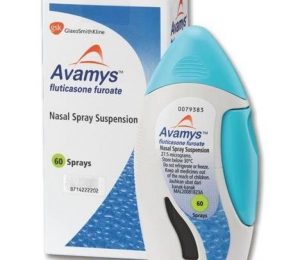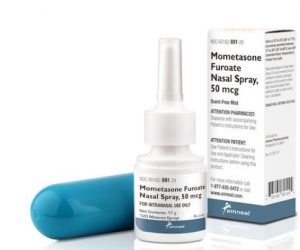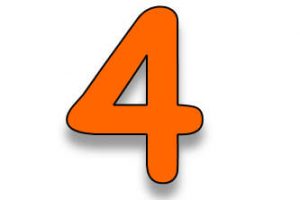The Most Common Allergic Rhinitis inhalation
The Most Common Allergic Rhinitis inhalation

The Most Famous 4 drugs most Commonly used in Allergic Rhinitis inhalation are:

Budesonide

- Brand Names: Rhinocort Aqua
- Therapeutic Category: Corticosteroid, Nasal Allergic Rhinitis inhalation
- Dosage Forms: Suspension, Nasal
- Use: Labeled Indications: Allergic rhinitis, Relief of symptoms of hay fever or other upper respiratory allergies (eg, nasal congestion, runny nose, itchy nose, sneezing)
- Off-Label Indication: Acute bacterial rhinosinusitis, adjunct to antibiotics, Chronic rhinosinusitis
- Dosing : Adult : Allergic rhinitis: Intranasal: One spray (32 mcg) in each nostril once daily (total daily dose: 64 mcg/day).
- Upper respiratory symptoms: Intranasal: Two sprays (64 mcg) in each nostril once daily (total daily dosage: 128 mcg/day)
- Pediatric: Allergic rhinitis: Children 6 to <12 years: Intranasal: Initial: 1 spray (32 mcg) per nostril once daily; dose may be increased if needed to 2 sprays (64 mcg) per nostril once daily; after improvement of symptoms, decrease dose to 1 spray (32 mcg) per nostril once daily
- Children ≥12 years and Adolescents: Intranasal: Initial: 2 sprays (64 mcg) per nostril once daily; after improvement of symptoms, decrease dose to 1 spray (32 mcg) per nostril once daily. Usual maximum daily dose: 128 mcg/day.
- Dose Adjustments
- Renal Impairment:. no dosage adjustments
- Hepatic Impairment: no dosage adjustments
- Adverse Drug Interaction:
Epistaxis , pharyngitis , bronchospasm , cough , nasal mucosa irritation
- Pharmacodynamics/Kinetics:
- Onset of action: Within 10 hours
- Peak effect: Up to 2 weeks
- Half-life elimination: 2 to 3 hours
- Bioavailability: Rhinocort Aqua: 34%
- Important Notes:
- Adrenal suppression: May cause hypercortisolism or suppression of hypothalamic-pituitary-adrenal (HPA) axis, particularly in younger children or in patients receiving high doses for prolonged periods
- Pregnancy & Lactation: Pregnancy Risk Factor B/ present in breast milk.

ِFluticasone

- Brand Names: Avamys
- Therapeutic Category: Corticosteroid, Nasal Allergic Rhinitis inhalation
- Dosage Forms: Suspension, Nasal
- Use: Labeled Indications: Allergic rhinitis/ Nasal polyps/ Nonallergic rhinitis/ Upper respiratory allergies
- Off-Label Indication: Acute bacterial rhinosinusitis, adjunct to antibiotics / Chronic rhinosinusitis / Viral rhinosinusitis symptomatic relief
- Dosing : Allergic rhinitis:
- Two sprays (27.5 mcg/spray) per nostril once daily (110 mcg/day). Total daily dosage should not exceed 2 sprays in each nostril (110 mcg/day).
- Pediatric: Rhinitis, nonallergic: Flonase (fluticasone propionate, 50 mcg/spray): Children ≥4 years and Adolescents: Intranasal: Initial: 1 spray per nostril once daily (total daily dose: 100 mcg/day).
- Rhinitis, allergic (seasonal and perennial): Children 2 to 11 years: Initial: 1 spray per nostril once daily (total daily dose: 55 mcg/day); if response is inadequate, increase to 2 sprays per nostril once daily (total daily dose: 110 mcg/day); once symptoms have been controlled, the dosage may be reduced to 1 spray per nostril once daily (total daily dose: 55 mcg/day).
- Dose Adjustments
- Renal Impairment:. no dosage adjustments
- Hepatic Impairment: no dosage adjustments
- Adverse Drug Interaction:
Headache / Body pain / dizziness / generalized ache/ Weight gain /Nausea and vomiting
- Pharmacodynamics/Kinetics:
- Onset of action: Maximal benefit may take several days or several months
- Bioavailability: <2%
- Half-life elimination: IV: Fluticasone propionate: 8 hours
- Important Notes: Adrenal suppression: May cause hypercortisolism or suppression of hypothalamic-pituitary-adrenal (HPA) axis, particularly in younger children or in patients receiving high doses for prolonged periods
- Pregnancy & Lactation: Pregnancy Risk Factor C/ not known if present in breast milk.
- Drug Safety Issue: Clarispray may be confused with Claritin

Mometason

- Brand Names: Nasonex
- Therapeutic Category: Corticosteroid, Nasal Allergic Rhinitis inhalation
- Dosage Forms: Suspension, Nasal
- Use: Labeled Indications: Allergic rhinitis (seasonal and perennial), Nasal congestion associated with seasonal rhinitis, Nasal polyps, Seasonal allergic rhinitis (prophylaxis)
- Off-Label Indication: Rhinosinusitis, adjunctive treatment/ Rhinosinusitis, treatment (acute, mild to moderate, uncomplicated)/ Chronic rhinosinusitis
- Dosing : Allergic rhinitis (seasonal and perennial): Intranasal: 2 sprays (100 mcg) in each nostril once daily (total daily dose: 200 mcg)
- Nasal congestion associated with seasonal rhinitis: Intranasal: 2 sprays (100 mcg) in each nostril once daily (total daily dose: 200 mcg)
- Pediatric: Children 2 to 11 years: 50 mcg (1 spray) per nostril once daily (total daily dose: 100 mcg/day)
- Children ≥12 years and Adolescents: 100 mcg (2 sprays) per nostril once daily (total daily dose: 200 mcg/day)
- Dose Adjustments
- Renal Impairment:. no dosage adjustments
- Hepatic Impairment: no dosage adjustments
- Adverse Drug Interaction:
Headache / Viral infection/ Epistaxis/ pharyngitis/ chronic sinusitis/ blood in nasal mucosa/ Chest pain
- Pharmacodynamics/Kinetics:
- Onset of action: Spray: Improvement in allergic rhinitis symptoms may be seen within 11 hours
- Bioavailability: Spray: <1%
- Metabolism: Hepatic
- Bioavailability: Spray: <1%
- Important Notes:
- Adrenal suppression: When recommended doses are exceeded, or in extremely sensitive individuals, may cause hypercortisolism or suppression of hypothalamic-pituitary-adrenal (HPA) axis
- Pregnancy & Lactation: Pregnancy Risk Factor C/ not known if present in breast milk.

Triamcinolone

- Brand Names: Nasacort
- Therapeutic Category: Corticosteroid, Nasal
- Dosage Forms: Aerosol, Nasal
- Use: Labeled Indications: Allergic rhinitis/ Upper respiratory allergies
- Off-Label Indication: Acute bacterial rhinosinusitis, adjunct to antibiotics / Chronic rhinosinusitis
- Dosing : Allergic rhinitis/upper respiratory symptoms: Intranasal: Two sprays (110 mcg) in each nostril once daily; once symptoms controlled reduce to 1 spray (55 mcg) in each nostril once daily (maximum: 2 sprays [110 mcg] in each nostril once daily).
- Pediatric: Rhinitis, allergic (seasonal and perennial): Children 2 to <6 years: One spray per nostril once daily. (Total daily dose 110 mcg/day). Maximum daily dose: 1 spray per nostril/day (110 mcg/day)
- Children 6 to <12 years: Initial: One spray per nostril once daily (Total daily dose: 110 mcg/day); may increase to 2 sprays per nostril once daily if response not adequate (Total daily dose 220 mcg/day); once symptoms are controlled, reduce to 1 spray per nostril once daily (Total daily dose 110 mcg/day). Maximum daily dose: 2 sprays per nostril/day (220 mcg/day)
- Dose Adjustments
- Renal Impairment:. no dosage adjustments
- Hepatic Impairment: no dosage adjustments
- Adverse Drug Interaction:
Headache / Pharyngitis/ Facial edema/ Pain /voice disorder
- Pharmacodynamics/Kinetics:
- Absorption: Systemic absorption may occur following intranasal administration.
- Half-life elimination: Biologic: 18-36 hours
- Important Notes: Adrenal suppression: When used at excessive doses, may cause hypercortisolism or suppression of hypothalamic-pituitary-adrenal (HPA) axis, particularly in younger children or in patients receiving high doses for prolonged periods.
- Pregnancy & Lactation: Pregnancy Risk Factor C/ not known if present in breast milk.
- Drug Safety Issue: Nasacort may be confused with NasalCrom
Read More:
Copyright ©: All content on FADIC Website, including medical opinion and any other health-related information, and drug Informtation is for informational purposes only


 Log in
Log in Sign up
Sign up






